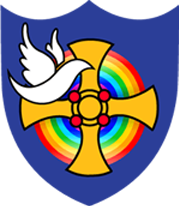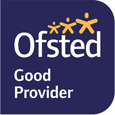Reading and Phonics
PHONICS

At Chester-le-Street CE Primary School School we believe that the teaching of Phonics plays a key role in helping children learn to read, write and spell. We follow the Sounds~Write Phonics Scheme which is a high-quality program endorsed by the DfE. Our aim is for all children to be confident readers by the end of KS1. High quality Phonics teaching enables children to decode new words confidently and independently and leads to improved understanding. This will result in children being able to read for pleasure, undertake research and develop their comprehension skills. Sounds~Write phonics also teaches children how to spell words and this helps them to become confident writers.
Please see our Phonics Policy to find out more.
Our teaching staff are trained in the phonics programme ‘Sounds-Write’. The teaching of reading and writing within the school is, therefore, based on the Sounds-Write programme. This begins very early on when children join in Reception and continues until a child is a confident and competent reader and speller. Sounds-Write is used around the world and is one of the DfE approved schemes.
The knowledge of sounds and symbols is an important starting point for understanding and using written language and we believe that a strong and consistent approach to the teaching of phonics is vital for our children to begin to access the rest of the curriculum. This is, however, used in conjunction with other strategies which help children to begin to read and write.
What is Soundswrite?
https://sounds-write.co.uk/page-96-video.aspx
Reception - initial code (single sounds, 2 letters make one sound, CVC, CCVC and CVCC words)
Year 1 and Year 2 - extended code (alternate ways to read and write one sound) and polysyllabic words.
Reading in the Early Years and Key Stage 1
Our classrooms are full of visual stimulus to help children begin to read and write. In Reception and KS1 children listen to daily stories during story time. The teachers choose from a bank of suggested literature to share with the children to help promote a love of reading from an early age and to help with early vocabulary development.
Across Reception and KS1, children are encouraged to read their decodable book at least three times per week at home. We ask that this is logged on our ‘We Read’ app which is also used by the class teacher to record reading.
Children read and re-read their Dandelion or Sounds-write decodable reader. Decodable readers are used when learning to read and only contain the phonetic code that the children have been exposed to. This means that the children are able to read most of the words by applying their phonics. This success in reading builds confidence and helps instil a love of reading. It also helps to consolidate the skills and sounds learnt from the Sounds-Write phonics sessions and supports the development of good reading strategies. This in turn helps to build reading fluency. Decodable readers will be given to the children throughout their time in EYFS, year 1 and for most of year 2 until the child has been exposed to most of the phonetic code.
Reading for Pleasure
Pupils in the Early Years, Year 1 and Year 2 will also receive a reading for enjoyment book from the school library. These books are to be read alongside an adult or read by an adult as a shared reading experience. These books help pupils to develop an understanding of story structure, characters and setting. Children learn to make their own choices and develop book preferences through selecting their own books. This can also be recorded on our ‘We Read’ app.
Reading in Key Stage 2
Scheme Books
Pupils in Key Stage 2 may still receive an Oxford Reading Tree scheme book in order to further develop their fluency. When children are ready they will then progress to banded books which are used to ensure the children’s enjoyment of reading continues and grows.
Accelerated Reader
Once pupils from Year 3 onwards are able to read fluently, they can choose an Accelerated Reader book from their class library. These non scheme books are banded in levels of difficulty of the language used within the book and match to their assessed level of reading ability. These will be read each day in class and the children will have the opportunity to take a quiz on the book when they have finished to check their understanding of what they have read. Please see our AR policy for more information regarding Accelerated Reading. These books have been carefully selected so pupils have access to the latest releases and enjoy the best stories and poems by high quality authors.
School Library
All year groups in Key Stage 2 are able to access and borrow from the school library as a further reading for pleasure opportunity.
Reading and Phonics Intent Document
Reading and Phonics Curriculum Intent
Reading Curriculum Documents
Primary National Curriculum - Reading

